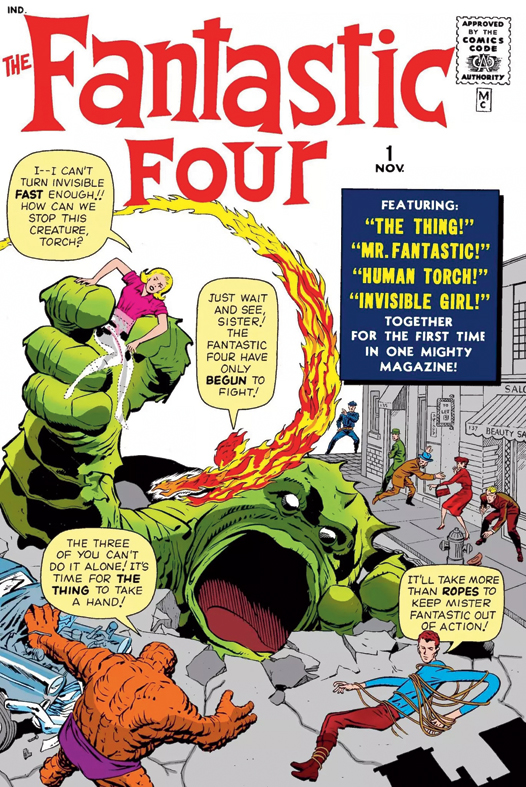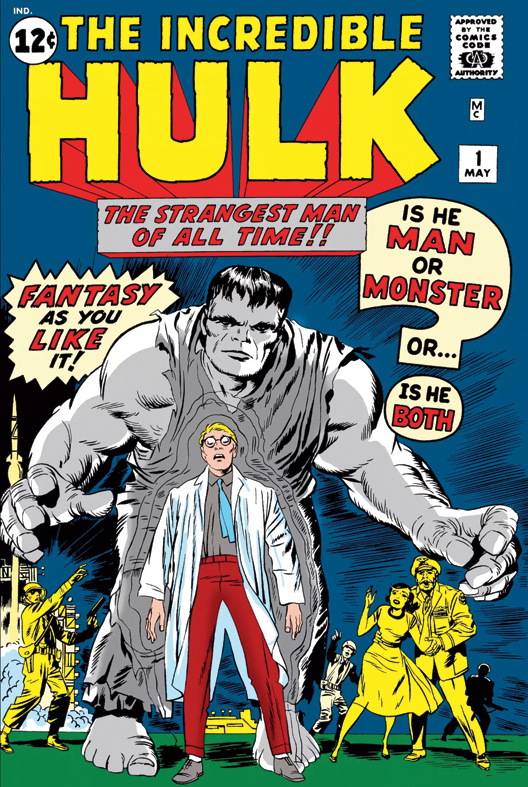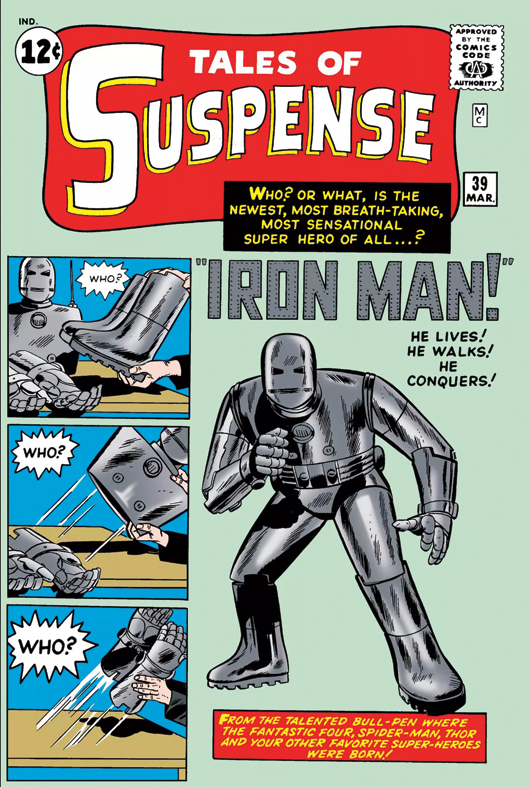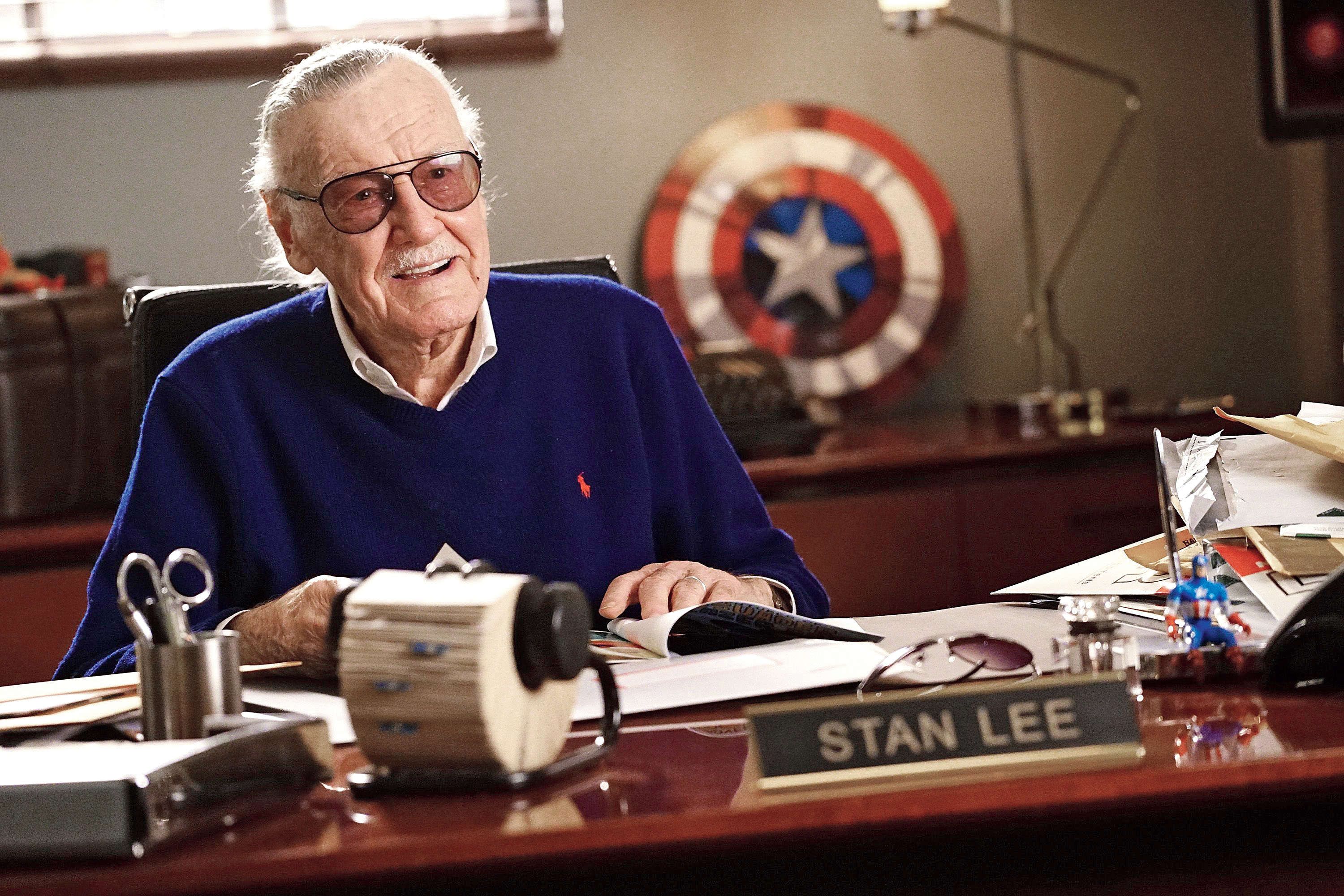If Stan Lee revolutionised the comic book world in the 1960s, which he did, he left as big a stamp — maybe bigger — on the even wider pop culture landscape of today.
Think of Spider-Man, the blockbuster movie franchise and Broadway spectacle. Think of Iron Man, another Hollywood gold-mine series personified by its star, Robert Downey Jr. Think of Black Panther, the box-office superhero smash that shattered big screen racial barriers in the process.
And that is to say nothing of the Hulk, the X-Men, Thor and other film and television juggernauts that have stirred the popular imagination and made many people very rich.
If all that entertainment product can be traced to one person, it would be Stan Lee, who died in Los Angeles on Monday at 95. From a cluttered office on Madison Avenue in Manhattan in the 1960s, he helped conjure a line-up of pulp-fiction heroes that has come to define much of popular culture in the early 21st century.
Lee was a central player in the creation of those characters and more, all properties of Marvel Comics. Indeed, he was for many the embodiment of Marvel, if not comic books in general, overseeing the company’s emergence as an international media behemoth. A writer, editor, publisher, Hollywood executive and tireless promoter (of Marvel and of himself), he played a critical role in what comics fans call the medium’s silver age.
Many believe that Marvel, under his leadership and infused with his colourful voice, crystallised that era, one of exploding sales, increasingly complex characters and stories, and growing cultural legitimacy for the medium. (Marvel’s chief competitor at the time, National Periodical Publications, now known as DC — the home of Superman and Batman, among other characters — augured this period, with its 1956 update of its superhero the Flash, but did not define it.)
Under Lee, Marvel transformed the comic book world by imbuing its characters with the self-doubts and neuroses of average people, as well an awareness of trends and social causes and, often, a sense of humour.
In humanising his heroes, giving them character flaws and insecurities that belied their supernatural strengths, Lee tried “to make them real flesh-and-blood characters with personality”, he told The Washington Post in 1992. “That’s what any story should have, but comics didn’t have until that point,” he said. “They were all cardboard figures.”
Though Lee was often criticised for his role in denying rights and royalties to his artistic collaborators, his involvement in the conception of many of Marvel’s best-known characters is indisputable.
‘I’m a fast writer’
He was born Stanley Martin Lieber on December 28, 1922, in Manhattan, the older of two sons born to Jack Lieber, an occasionally employed dress cutter, and Celia (Solomon) Lieber, both immigrants from Romania. The family moved to the Bronx. He began reading Shakespeare at 10 while also devouring pulp magazines, the novels of Arthur Conan Doyle, Edgar Rice Burroughs and Mark Twain, and the swashbuckler movies of Errol Flynn.
He was set on the path to becoming a different kind of writer when, after a few false starts at other jobs, he was hired at Timely Publications, a company owned by Martin Goodman, a relative who had made his name in pulp magazines and was entering the comics field.
Lee was initially paid $8 a week as an office gofer. Eventually he was writing and editing stories, many in the superhero genre. At Timely he worked with the artist Jack Kirby (1917-94), who, with a writing partner, Joe Simon, had created the hit character Captain America, and who would eventually play a vital role in Lee’s career. When Simon and Kirby, Timely’s hottest stars, were lured away by a rival company, Lee was appointed chief editor.
As a writer, Lee could be startlingly prolific. “Almost everything I’ve ever written I could finish at one sitting,” he once said. “I’m a fast writer. Maybe not the best, but the fastest.” He used several pseudonyms to give the impression that Marvel had a large stable of writers; the name that stuck was simply his first name split in two. (In the 1970s, he legally changed Lieber to Lee.)
During World War II, Lee wrote training manuals stateside in the Army Signal Corps while moonlighting as a comics writer. With the dimming of superhero comics’ golden age, Lee was tired of grinding out generic humour, romance, Western and monster stories. Reaching a career impasse in his 30s, he was encouraged by his wife to write the comics he wanted to, not merely what was considered marketable. And Goodman, his boss, spurred by the popularity of a rebooted Flash (and later Green Lantern) at DC, wanted him to revisit superheroes.
Enter the Fantastic Four and Spider-Man
In 1961, Lee and Kirby — whom he had brought back years before to the company, now known as Marvel — produced the first issue of The Fantastic Four, about a superpowered team with humanising dimensions: non-secret identities, internal squabbles and, in the orange-rock-skinned Thing, self-torment. It was a hit.
Other Marvel titles — like the Lee-Kirby creation The Incredible Hulk, a modern Jekyll-and-Hyde story about a decent man transformed by radiation into a monster — offered a similar template. The quintessential Lee hero, introduced in 1962 and created with the artist Steve Ditko (1927-2018), was Spider-Man.
A timid high school intellectual who gained his powers when bitten by a radioactive spider, Spider-Man was prone to soul-searching, leavened with wisecracks — a key to the character’s lasting popularity across multiple entertainment platforms, including movies and a Broadway musical.
He was often faulted for not adequately acknowledging the contributions of his illustrators, especially Kirby. Spider-Man became Marvel’s best-known property, but Ditko, its co-creator, quit Marvel in bitterness in 1966. Kirby, who visually designed countless characters, left in 1969.
Turning to live action
Lee moved to Los Angeles in 1980 to develop Marvel properties, but most of his attempts at live-action television and movies were disappointing. (The series The Incredible Hulk, seen on CBS from 1978 to 1982, was an exception.)
Avi Arad, an executive at Toy Biz, a company in which Marvel had bought a controlling interest, began to revive the company’s Hollywood fortunes, particularly with an animated X-Men series on Fox, which ran from 1992 to 1997. (Its success helped pave the way for the live-action big-screen X-Men franchise, which has flourished since its first instalment, in 2000.)
In the late 1990s, Lee was named chairman emeritus at Marvel and began to explore outside projects. While his personal appearances (including charging fans $120 for an autograph) were one source of income, later attempts to create wholly owned superhero properties foundered.
In a profile in The New York Times in April, a cheerful Lee said, “I’m the luckiest guy in the world,” adding that “my daughter has been a great help to me” and that “life is pretty good” — although he admitted in that same interview, “I’ve been very careless with money.”
Lee’s unwavering energy suggested that he possessed superpowers himself. (In his 90s he had a Twitter account, @TheRealStanlee.) And the National Endowment for the Arts acknowledged as much when it awarded him a National Medal of Arts in 2008. But he was frustrated, like all humans, by mortality.
“I want to do more movies, I want to do more television, more DVDs, more multi-sodes, I want to do more lecturing, I want to do more of everything I’m doing,” he said in With Great Power…: The Stan Lee Story, a 2010 television documentary. “The only problem is time. I just wish there was more time.”
The books
Remembering the man
Robert Downey Jr.: I owe it all to you... Rest In Peace Stan... #MCU #Excelsior #legend #rip #stanlee #TeamStark
Hugh Jackman: We’ve lost a creative genius. Stan Lee was a pioneering force in the superhero universe. I’m proud to have been a small part of his legacy and to have helped bring one of his characters to life. #StanLee #Wolverine
Chris Evans: There will never be another Stan Lee. For decades he provided both young and old with adventure, escape, comfort, confidence, inspiration, strength, friendship and joy. He exuded love and kindness and will leave an indelible mark on so, so, so many lives. Excelsior!
Ryan Reynolds: Thanks for everything.
Neil Gaiman: I was first interviewed for Stan Lee’s obituary about 20 years ago. I was happy he defied the reaper and carried on. With Stan gone, an era really does come to an end. He was the happy huckster that comics needed. And he really did alliterate like that when you talked to him.
Winston Duke: You gave us characters that continue to stand the test of time and evolve with our consciousness. You taught us that there are no limits to our future as long as we have access to our imagination. Rest in power! #EXCELSIOR #StanLee #rip.

In 1961, Stan Lee and the artist Jack Kirby produced the first issue of The Fantastic Four Agency

Spider-Man, created with the artist Steve Ditko, was introduced in 1962 Agency

The Incredible Hulk was first published in May 1962 Agency

Thor first appeared in Journey into Mystery #83 in 1962 Agency

Iron Man made his first appearance in Tales of Suspense #39 in 1963 Agency










